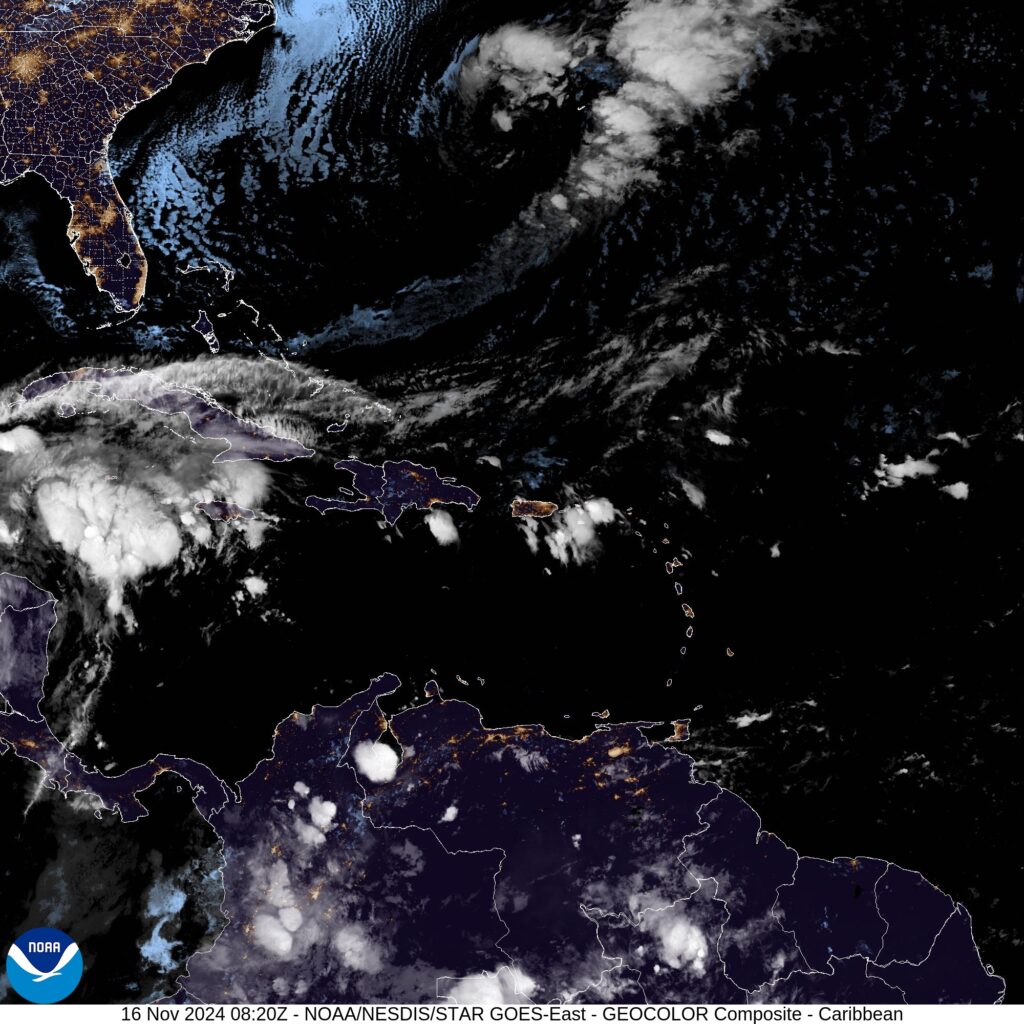TEGUCIGALPA — Belize issued tropical storm warnings for the Central American country’s coast on Friday as Tropical Storm Sara stalled in the western Caribbean, dousing Honduras’ northern coast with heavy rain.
Sustained rain fell overnight in the Honduran city of San Pedro Sula, with no immediate sign of serious flooding.
Sara was forecast to drop 10 to 20 inches of rain, with up to 30 inches in isolated areas of northern Honduras. The heavy rain could lead to life-threatening flooding and landslides, according to the Miami-based National Hurricane Center.
Map shows the forecast path of Tropical Storm Sara in Central America the weekend of November 16-17.
The weather system made landfall late Thursday about 105 miles west-northwest of Cabo Gracias a Dios, on the Honduras-Nicaragua border, the center reported. That is near Brus Laguna, a village of about 13,000 inhabitants. There are few other areas of population nearby.
In its latest update Friday night, the hurricane center said the storm was “producing torrential rainfall causing potentially catastrophic flooding and mudslides for portions of Central America.” It was located about 35 miles southwest of Honduras’ Guanaja Island and 155 miles southeast of Belize City, with maximum sustained winds of 50 mph. Its movement had halted and it was considered stationary.
Sara’s center was expected to move near Honduras’ northern coast through today and then make landfall in Belize tomorrow, the hurricane center said.
It was then expected to turn northwesterly towards Mexico’s Yucatan Peninsula, though forecasters said it probably won’t reemerge into the Gulf after crossing the Yucatan.
“What remains of the system when it emerges into the Bay of Campeche in the Gulf of Mexico is not very favorable for redevelopment,” the hurricane center said in an earlier advisory.
Mexican authorities warned that it could cause “intense rains” over the resort-studded Yucatan Peninsula.
Tropical storm warnings were in place for Honduras’ northern coast and its Bay Islands, the Belize coast, the Caribbean Sea coast of Guatemala and the Mexican coast from Puerto Costa Maya southward to Chetumal.
In November 2020, Eta and Iota passed through Honduras after initially making landfall in Nicaragua as powerful Category 4 hurricanes. Northern Honduras caught the worst of the storms with torrential rains that set off flooding that displaced hundreds of thousands. Eta alone was responsible for as much as 30 inches of rain along the northern coast.
Sara, the 18th named storm of the 2024 Atlantic Hurricane Season, is expected to linger in the Caribbean through the weekend and slowly move into the Gulf of Mexico early next week. After that, its path is less clear. CBS News meteorologist Nikki Nolan said a lot of the models are now trending towards it dissipating either after it enters the Gulf of Mexico or over Mexico, but several still have it aiming towards Florida.
“Florida residents should closely monitor the forecast updates as they come in,” Nolan advised.
The Atlantic Hurricane Season officially runs from June 1 until Nov. 30, with activity typically peaking between mid-August and mid-October. An average season brings 14 named storms, seven hurricanes, and three major hurricanes, according to the National Oceanic and Atmospheric Administration, which did predict the 2024 season would produce “above average” numbers.
SOURCE: CBS News

